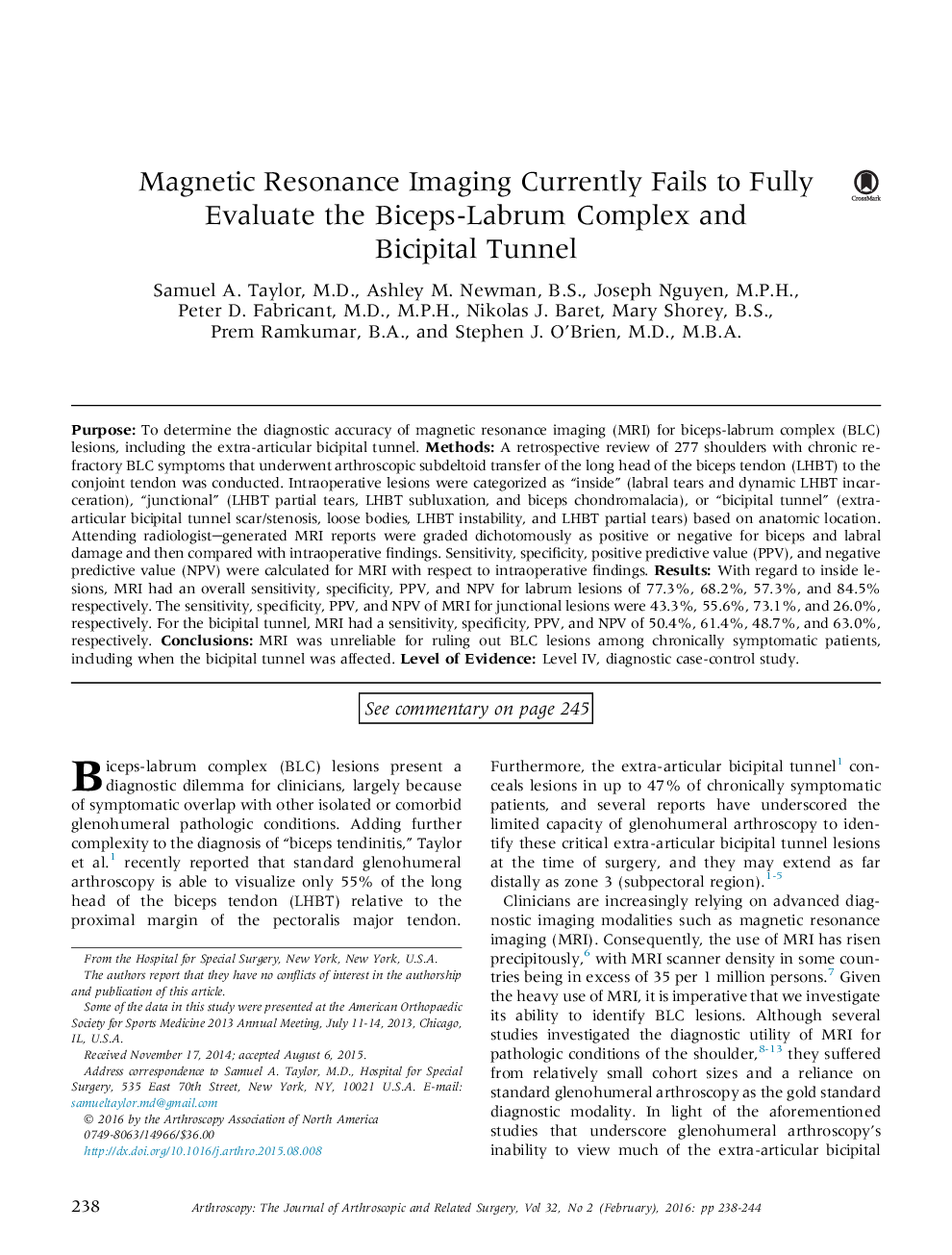| Article ID | Journal | Published Year | Pages | File Type |
|---|---|---|---|---|
| 4042299 | Arthroscopy: The Journal of Arthroscopic & Related Surgery | 2016 | 7 Pages |
PurposeTo determine the diagnostic accuracy of magnetic resonance imaging (MRI) for biceps-labrum complex (BLC) lesions, including the extra-articular bicipital tunnel.MethodsA retrospective review of 277 shoulders with chronic refractory BLC symptoms that underwent arthroscopic subdeltoid transfer of the long head of the biceps tendon (LHBT) to the conjoint tendon was conducted. Intraoperative lesions were categorized as “inside” (labral tears and dynamic LHBT incarceration), “junctional” (LHBT partial tears, LHBT subluxation, and biceps chondromalacia), or “bicipital tunnel” (extra-articular bicipital tunnel scar/stenosis, loose bodies, LHBT instability, and LHBT partial tears) based on anatomic location. Attending radiologist–generated MRI reports were graded dichotomously as positive or negative for biceps and labral damage and then compared with intraoperative findings. Sensitivity, specificity, positive predictive value (PPV), and negative predictive value (NPV) were calculated for MRI with respect to intraoperative findings.ResultsWith regard to inside lesions, MRI had an overall sensitivity, specificity, PPV, and NPV for labrum lesions of 77.3%, 68.2%, 57.3%, and 84.5% respectively. The sensitivity, specificity, PPV, and NPV of MRI for junctional lesions were 43.3%, 55.6%, 73.1%, and 26.0%, respectively. For the bicipital tunnel, MRI had a sensitivity, specificity, PPV, and NPV of 50.4%, 61.4%, 48.7%, and 63.0%, respectively.ConclusionsMRI was unreliable for ruling out BLC lesions among chronically symptomatic patients, including when the bicipital tunnel was affected.Level of EvidenceLevel IV, diagnostic case-control study.
